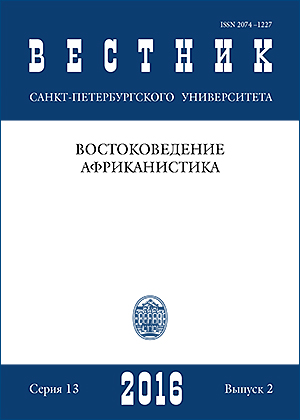Distinctive features of Ezra Pound’s “Cathay”
DOI:
https://doi.org/10.21638/11701/spbu13.2016.209Abstract
This paper deals with one of the most relevant and ambiguous aspects of Ezra Pound’s Chinese translations through an integrated, interdisciplinary approach. The research problem lies in evaluating the very reliability and adequacy of a so-called multilayered translation. The object of research is the literary heritage of Ezra Pound as a translator based on Imagist, Vorticist principles and Ernest Fenollosa’s ideogrammic method. The aim of research is to disclose, comprehensively analyse, systematise and practically verify the translation transformations applied by Ezra Pound within the “Cathay” volume. The research hypothesis is that a multilayered translation may be considered a valid translation. Ezra Pound’s “Cathay”, regardless of its indubitable amateurish foundation and target reader orientation, has managed to initiate an intercultural dialogue which has immutably persisted in the post-“Cathay” era. Thus, Pound has contributed significantly more to comparative literature than galaxies of experienced, albeit reactionary, scholars of the 19–20th century have. Overall, this article should be of interest to readers, because results of research constitute a theoretical and practical basis for the multiple-lens approach towards a Chinese poetry translation.
Keywords:
Pound, Cathay, Imagism, Fenollosa, Vorticism, Orientalism
Downloads
References
Downloads
Published
How to Cite
Issue
Section
License
Articles of "Vestnik of Saint Petersburg University. Asian and African Studies" are open access distributed under the terms of the License Agreement with Saint Petersburg State University, which permits to the authors unrestricted distribution and self-archiving free of charge.





